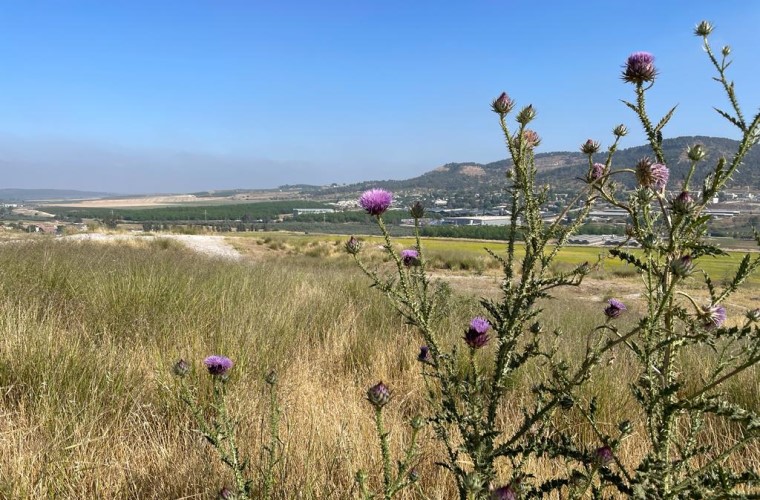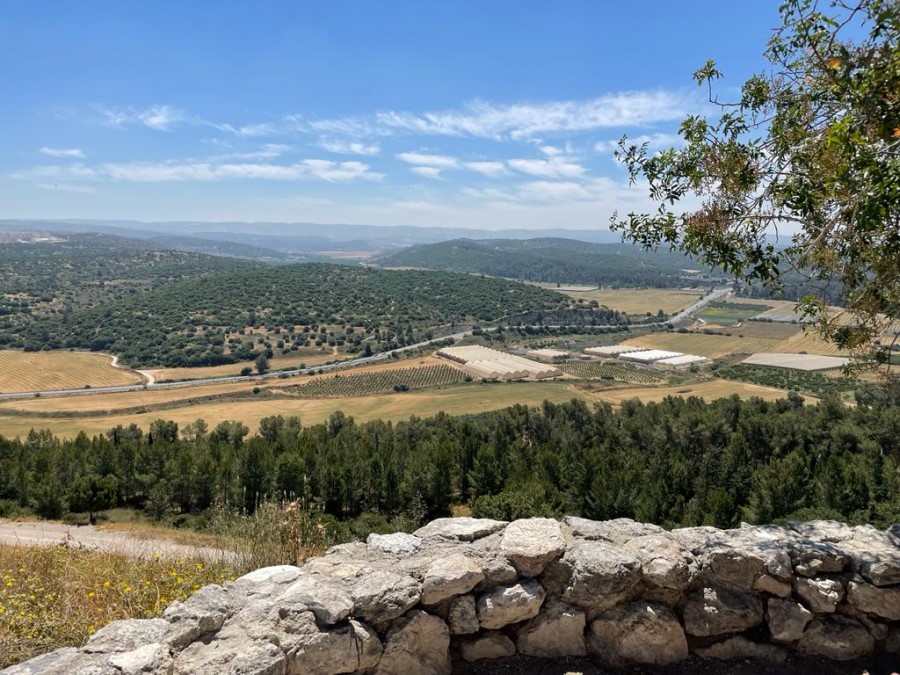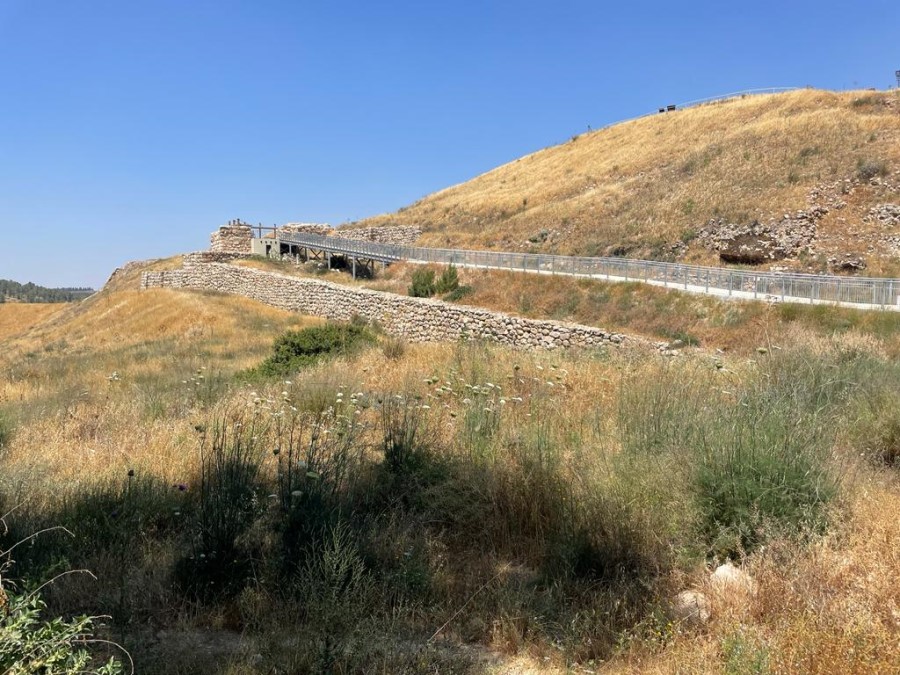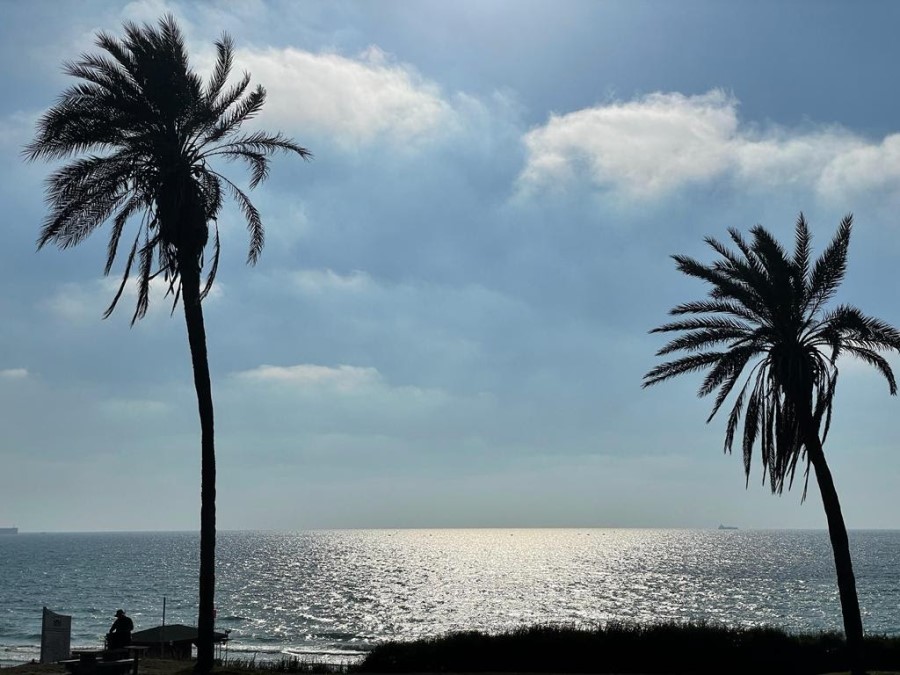Shalom!
Today began a four day tour of southern Israel or the Negev. On our drive down to Be’er Sheva (modern Beersheba), we stopped to look at a few sites along the way in the “Shephelah” or lowlands of ancient Judah. Here are a few highlights:
We stopped at ancient Azekah, one of the fortress cities of Judah in the divided kingdom period (cf. 2 Chr 11:9). From Azekah, we are able to look over the Elah Valley and the site of David’s famous battle with Goliath. In OT times, the Elah Valley was one of the few good routes to the Judean heartland (and especially to Bethlehem and Jerusalem). Therefore, when a certain Philistine army threatened to come through the valley, King Saul met them with the army of Israel. However, the armies did not engage; instead, they lined up on opposite ridgelines, the Israelites to the north (left hills in the picture) and the Philistines to the south, from Azekah to Socoh (right hills in the picture) (1 Sam 17:1-3). Meanwhile, the Philistine giant Goliath marched down into the valley day after day to challenge the warriors of Israel and to defy Israel’s God (1 Sam 17:4-11, 45). However, young David, already anointed by Samuel to be Israel’s next king (1 Sam 16:13), had faith in God and was zealous for God’s name (1 Sam 17:45-47). David descended from the north ridgeline, picked up five smooth stones from the Wadi Elah in the middle of the valley, and then met Goliath—two lone figures in the middle of the valley watched by the armies on both sides (1 Sam 17:40, 48). When Goliath fell, the previously frightened Israelites charged down the hill in pursuit and the Philistines knew that there was indeed a God in Israel (1 Sam 17:49-54).
After Azekah, we drove to another valley in the Shephelah to visit the site of the most important fortress city in Judah (aside from Jerusalem) in OT times: Lachish (cf. Josh 10:31-32; 2 Chr 11:9). Close to the International Coastal Highway and guarding a backdoor route to Jerusalem, Lachish was a clear obstacle to any invading army. The double-walled city was quite large (30 acres; compare Jerusalem’s original size under David of 9 acres) and featured a three-storied fortress-palace within. The gate complex at Tel Lachish has yielded a doubly interesting archaeological discovery: a chamber set aside for idolatrous worship (the syncretism of Judah’s wicked kings) that was later used as a latrine before being buried under dirt (no doubt due to Hezekiah’s or Josiah’s reforms, cf. 2 Ki 10:27). Lachish was conquered by Assyria before Sennacherib was supernaturally repelled by the Lord (2 Ki 18:14, 17; 19:8; 35-37) but was then conquered again and destroyed by Babylon in the final years of the kingdom of Judah (Jer 34:6-7). Lachish was never again rebuilt.
Our final stop on the way down to Be’er Sheva was at the site of ancient Ashkelon, one of the five great cities of Philistines (1 Sam 6:17). We took time to examine and then walk through an uncovered Canaanite city gate, the oldest arched gate in the world. Then, as Ashkelon was a coastal city, we took a brief swim in the Mediterranean. The waters were very refreshing after a rigorous day of touring!




